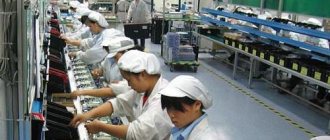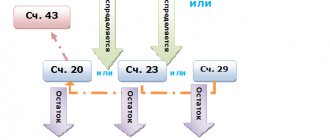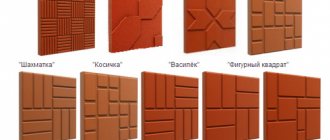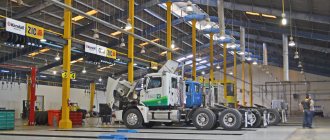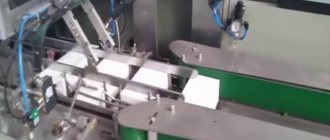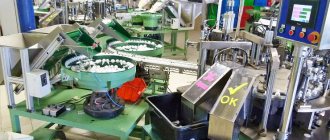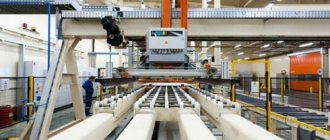Definition
Work in progress is considered one of the main components of working capital. In different industries, its size and composition can vary significantly, depending on the following factors:
- product parameters and manufacturing technology;
- time for a full production cycle;
- cost indicators of the enterprise.
Remains of work in progress are various raw materials and materials, semi-finished products, as well as labor that is used by workers to transform materials into finished products. In order to plan and keep records, time, cost, and labor indicators are used.
The cost indicator includes all the costs incurred by the enterprise for the manufacture of products for a certain reporting period. Time is determined by the ratio of the balance of work in progress to the total output at cost.
In order to achieve the maximum reduction in work in process indicators, it is necessary to reduce the duration of the product production cycle. This is achieved through a higher organization of the technical level of production and labor.
Reflection on accounts
The balances on accounts 20, 23 and 29 show the amount of expenses that the company has among work in progress.
In other words, they actually show the cost of products or work that have not gone through all the stages or processing stages provided for by the technology. “Unfinished” also includes those products that did not pass tests and were rejected by technical control, or that were understaffed.
In order to find out the costs of work in progress, companies maintain an accounting report, which indicates any reflections on the accounts for the reporting period. In company accounting, costs are determined in one of four ways:
- Calculation based on actual production costs.
- At standard (planned) cost.
- With the help of cost items.
- At the cost of all consumables, semi-finished products and raw materials.
The first method is fixed in the accounting policy by the company's management. In unit production, only the actual cost accounting method is used, since it is the most accurate among all. It includes absolutely all expenses incurred by the company in producing products or providing services. This method is equally good in both mass and individual production.
The second method is relevant for serial and mass production and assumes that each finished unit of finished product incurs planned costs, which are calculated by the economics department. The difference between the actual and planned costs is written off as an increase or decrease in the cost of the product.
According to the third method, only direct expenses are included in the costs of work in progress, the list of which is approved by the accounting department.
The fourth method takes into account in the cost of work in progress only the costs of raw materials, materials and semi-finished products that are used for production.
It should be noted that the last two methods are relevant only in enterprises with very high material consumption. In this production, the cost of finished products largely depends on the cost of raw materials.
WIP refers to production inventories, according to 10 P(S)BU 9 “Inventories”. Regardless of the chosen method of calculating production costs, work in progress is reflected in synthetic and analytical accounting by accounting entry debit 26 “Finished products” and credit 23 “Production”.
Cost accounting in work in progress
The above means that the question of which entries for work in progress are generated in accounting is not correct. After all, the amount of work in progress is not the turnover of the accounts, but the balance of account 20, i.e., its slice as of a certain date. The answer to the question “Costs in work in progress - an asset or a liability” should not raise any doubts. WIP is part of the organization’s property, which is reflected in the balance sheet asset in the line “Inventories” (clause 20 of PBU 4/99).
But in what assessment the balance of work in progress is reflected depends on the procedure adopted by the organization and enshrined in its accounting policies for accounting purposes.
There are the following options for assessing work in progress (clause 64 of Order of the Ministry of Finance dated July 29, 1998 No. 34n):
| Type of production | WIP assessment method |
| Mass and serial production | - at actual production cost; — according to standard (planned) production costs; - by direct cost items; — at the cost of raw materials, materials and semi-finished products |
| Single production | - based on actual costs incurred |
Moreover, in addition to standard accounting entries for the release of finished products or write-off of costs when performing work (services), it is also possible to write off work in progress as a loss. For example, WIP for a canceled production order will be written off by the accounting entry:
Debit account 91-2 “Other expenses” - Credit account 20.
The production of a product is a process that fits into various time periods. For some types of products the production cycle is short, while for others it takes a very long time. Experienced accountants use the abbreviation WIP to indicate the unfinished process in the reporting period, the decoding of which is simple - unfinished production. To adequately assess the cost of a company's finished products, it is important to correctly calculate the volume of work in progress, i.e., products that are at the stage of an unfinished technical process and have not passed all stages of production, packaging and acceptance. Let's talk about the features of accounting for this asset, as well as about which account the work in progress is reflected in.
Expenses
The smaller the volume of work in progress, the better working capital works.
At the same time, the work in progress must be sufficient in volume, composition and placement (along the entire production line), as well as in order to maintain uninterrupted and uniform operation of the enterprise. This, in turn, is achieved, on the contrary, by increasing the volume of work in progress.
When a report on the expenses of an enterprise is prepared, all types of its activities are classified according to the following points:
- consumption of material resources;
- depreciation means;
- expenses for social security needs;
- employee wage costs;
- other costs.
All products (work) that for some reason have not been completed, have not yet entered production, have not passed testing and technical acceptance, are classified as work in progress. Serial, mass production is reflected on the balance sheet according to the following points:
- price of raw materials, materials and semi-finished products;
- direct costs of raw materials;
- planned production cost (actual or standard).
In the balance sheet of those enterprises that are engaged in single production of certain products, work in progress is displayed based on direct costs.
Those expenses that the organization incurred during the preparation of reports, but they relate to subsequent reporting periods, are included by the accounting department in a special article. These expenses are characterized as expenses of the following reporting periods, and they must be written off.
Write-offs occur evenly, in the order established by the enterprise, during the period to which the expenses relate.
How to calculate the amount of work in progress
Account 20 is used to accumulate information about all expenses for the production of goods, the provision of services for the declared types of activities, and the performance of various contract works (design, engineering, geodetic, scientific and survey, etc.). The debit of this account includes direct costs associated with the listed types of activities, as well as indirect costs of general order and auxiliary facilities.
Direct production costs are transferred to the debit of the account. 20 from credit accounts:
- depreciation (, 05);
- Inventory (, , );
- settlements with customers (, 76), as well as personnel () and funds (69);
- accounting for defects that can be eliminated (28).
In addition to the main one, the company often involves auxiliary and service production. Every month in debit account. 20 part of the expenses is transferred from the credit accounts:
- auxiliary farms (23);
- indirect costs for maintaining maintenance and management personnel (25);
- share of general business expenses (26).
After the costs are fully collected at the end of the month in the debit of the account. 20, the total cost of producing the finished product or performed work/services is written off from the account credit, i.e. completed production. The accounting entry here will be as follows: D/t 40 (43, 90) K/t 20.
Remaining on account 20 the final debit balance will reflect the volume of work in progress, i.e. the cost of expenses allocated for processing, which was not completed at the end of the reporting period.
If the production process involves auxiliary and service facilities, where expenses related to the company’s activities are also recorded, and at the end of the month there remain open balances - debit balances, then this means the following:
- according to account 23 reflects the cost of auxiliary work in progress;
- according to account 29 – the amount of work in progress of the service economy.
The total amount of work in progress for the whole company in this case will consist of the balances of the debit accounts on the 20th, 23rd, 29th. Thus, not one, but several production cost accounts are involved in the formation of work in progress. The summed debit balances in these accounts create the real value of the work in progress at the end of the accounting period in question.
Tax accounting
When calculating income tax, the payer must determine the number of direct and indirect costs in his accounting system.
In order to include any expenses as direct costs, there must be a direct connection between these expenses and the production of products, provision of services or performance of work.
An enterprise has the right to classify some costs for the manufacture of products or for work and services as indirect costs. This is allowed only if there is no connection between these costs and direct costs. To do this, a business case needs to be applied.
Direct costs are distributed in an independently established manner to work in progress and products that were manufactured in a given month, as well as work and services. At the same time, it is very important that all expenses correspond to the list of products produced, work performed and services performed.
If direct costs cannot be attributed to a certain stage in the production of a particular product (work, service), then a mechanism for dividing such costs using economic justification must be created. This mechanism must be used for at least two tax periods.
Provision of services
The provision of a service can be classified as work in progress because some of the types of services may have tangible results that the customer receives.
For example, consulting or audit services. By providing services of this kind, the taxpayer can keep records of direct expenses. According to tax legislation, he has the right to distribute direct and indirect costs for the provision of services and unfinished services.
WIP includes even completed services, but not yet accepted or rejected by the client. They also include unfinished orders and the remains of semi-finished products as a result of their production. Those materials that have already entered the production process, but have not yet been processed, do not belong to WIP.
Simply put, work in progress for service companies will be those services that are not yet fully completed, as well as those that the customer has not yet accepted.
At the end of the month, the taxpayer must evaluate the remaining work in progress. It is done on the basis of data obtained from primary documentation on progress and balances of unfinished services, as well as tax accounting data on direct expenses for the month
Cost of work in progress and construction
The cost of work in progress includes all costs that went directly to the processing of “work in progress” objects with direct cost accounting.
When taking into account full costs, WIP includes all costs incurred in a given period, both direct and indirect (general production costs). The latter method is more common.
Below are the entries for calculating the cost using the full cost method:
| Account Debit | Account Credit | Description | Sum | A document base |
| 20.01 | Expenses of auxiliary production are distributed to the main production (OP) | The amount of expenses of this type going to the OP | Accounting certificate-calculation | |
| 20.01 | General production expenses are allocated to OP | Accounting certificate-calculation | ||
| 20.01 | General business expenses are distributed to OP | Accounting certificate-calculation | ||
| 20.01 | Cost of main production (completed products) | Cost of finished products | Accounting certificate-calculation | |
| 90.02.1 | 20.01 | Cost of work and services performed | Cost of services | Accounting certificate-calculation |
| 90.02.1 | General business expenses (not allocated to the OP) are written off to the cost of sales | Amount of general business expenses | Accounting certificate-calculation |
Inventory
The WIP inventory for each enterprise or company is different, since they can differ significantly in manufacturing process technology. In general, the main tasks of inventory are:
- establishing the actual number of parts, assemblies, assemblies and mechanisms that are located in workshops and production areas, as well as those that have not been assembled or not fully manufactured;
- determining the completeness of all production facilities with parts, materials or semi-finished products;
- determination of WIP balances for failed or canceled orders.
Before starting an inventory, you need to stock the warehouse with all parts, mechanisms, semi-finished products, assemblies, as well as those materials and components that are no longer used at the current stage. After this, you can begin inventory, which occurs through actual counting, weighing or renaming.
The result of the inventory is a document (inventory) that is issued to each production site or workshop. It contains the names of all parts, materials, mechanisms and assemblies, as well as their quantity, condition and volume.
For construction and installation work, a special inventory is drawn up, which indicates the total volume of work on unfinished objects, types of work, and their queue.
All raw materials, consumables, semi-finished products and other materials that have not yet been included in the processing process are indicated in separate inventories. A separate inventory is also drawn up for defective parts.
For those industries that produce heterogeneous masses and combine different raw materials, inventory of work in progress should be carried out using two technologies: control of the quantity of products and control of the number of components that make up the product.
To inventory global construction, inventory documents indicate the name of the structure and the volume of completed work. Each type of work, structural element, equipment and technology for the facility is also described in detail.
In this case, incoming equipment that has not yet been installed is determined. Construction sites that have been mothballed, or those on which work has been suspended, are also subject to inventory. The inventory indicates the readiness of the facility, the cost of work and the reasons why construction was stopped.
